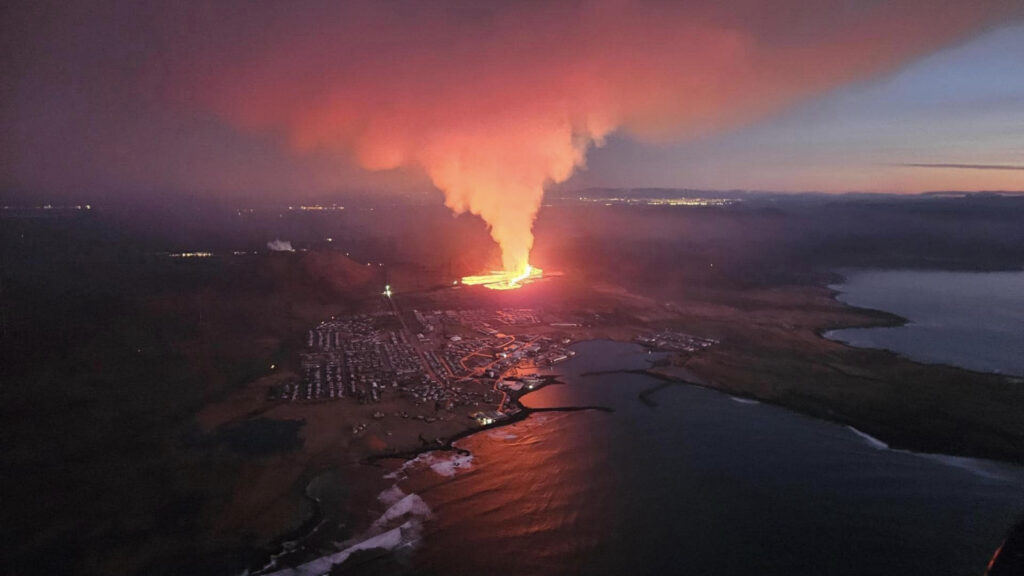
Lava erupted from Sundhnukagigar, an active volcanic fissure near Grindavik in Iceland, on January 14, 2024. This dramatic display underscores a growing concern among scientists: the melting of glaciers could lead to more frequent and explosive volcanic eruptions, potentially exacerbating climate change. This warning comes from a new study that highlights the increased volcanic activity beneath glaciers as they retreat due to global warming.
The research, which will be presented on July 8, 2025, at the Goldschmidt Conference in Prague, focuses on the activity of six volcanoes in southern Chile during the last ice age. According to the study, hundreds of volcanoes in regions like Antarctica, Russia, New Zealand, and North America lie beneath glaciers. As these ice sheets melt, these volcanoes are likely to awaken, posing a significant risk.
Scientific Insights into Volcanic Activity
Study lead-author Pablo Moreno Yaeger, a graduate student at the University of Wisconsin-Madison, explained, “Glaciers tend to suppress the volume of eruptions from the volcanoes beneath them. But as glaciers retreat due to climate change, our findings suggest these volcanoes go on to erupt more frequently and more explosively.”
This theory, first proposed in the 1970s, is based on the concept that the weight of glaciers exerts a downward force on Earth’s crust and mantle. When glaciers melt, the pressure is relieved, allowing subterranean gases and magma to expand, which can lead to explosive eruptions.
“The key requirement for increased explosivity is initially having a very thick glacial coverage over a magma chamber, and the trigger point is when these glaciers start to retreat, releasing pressure — which is currently happening in places like Antarctica,” Moreno Yaeger said.
Historical Context and Current Concerns
This process has already reshaped regions like Iceland, which sits atop the diverging North American and Eurasian tectonic plates. In 2002, researchers noted a significant increase in volcanic activity in Iceland as glaciers retreated at the end of the last ice age, around 10,000 years ago. The island’s volcanoes erupted at rates 30 to 50 times greater than before.
Despite these findings, the potential threat within continental volcanic systems remains understudied. To address this gap, scientists examined six volcanoes in southern Chile, including the dormant Mocho-Choshuenco volcano, to understand their response to the melting of the Patagonian Ice Sheet thousands of years ago.
By analyzing the radioactive decay of argon and studying magmatic rock crystals, researchers tracked volcanic activity in relation to the ice retreat. They discovered that during the peak of the last ice age, ice cover suppressed eruptions, leading to a buildup of magma beneath the surface. As the ice melted, pressure increased, eventually resulting in the formation of the Mocho-Choshuenco volcano.
Global Implications and Future Outlook
The study’s implications are far-reaching. A 2020 study identified 245 potentially active volcanoes worldwide that lie beneath or within five kilometers of ice, highlighting the global scope of this threat. Moreno Yaeger emphasized the need for increased scientific attention in regions like North America, New Zealand, and Russia.
In the short term, volcanic eruptions release sulfate aerosols that reflect sunlight, leading to temporary cooling events. However, over the long term, the greenhouse gases emitted by these eruptions could accelerate climate change.
“Over time the cumulative effect of multiple eruptions can contribute to long-term global warming because of a buildup of greenhouse gases,” Moreno Yaeger noted. “This creates a positive feedback loop, where melting glaciers trigger eruptions, and the eruptions in turn could contribute to further warming and melting.”
As the planet continues to warm, understanding the interplay between melting glaciers and volcanic activity becomes increasingly critical. The findings of this study underscore the importance of monitoring these geological processes to mitigate potential risks and adapt to the changing climate landscape.





